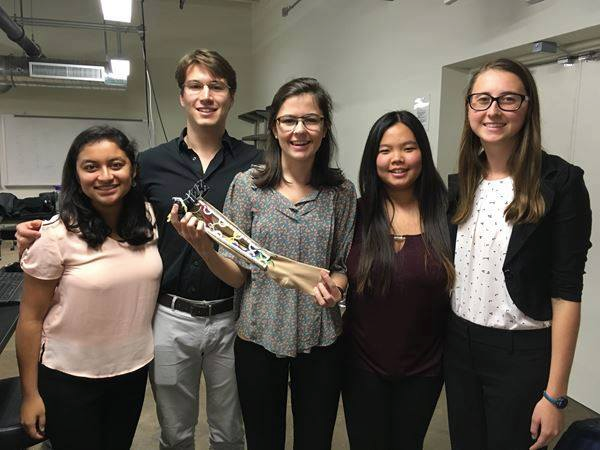 Over the last decade, Blake Commager (@commagere) has raised over $12 million in venture capital funding, started seven companies and sold five—including the first version of Facebook Causes and some of the most popular apps on Facebook, such as Zombies and Vampires. Born and raised in Midland, Texas, Commager graduated from Rice in 1999 and moved to the San Francisco Bay Area in 2003.
Over the last decade, Blake Commager (@commagere) has raised over $12 million in venture capital funding, started seven companies and sold five—including the first version of Facebook Causes and some of the most popular apps on Facebook, such as Zombies and Vampires. Born and raised in Midland, Texas, Commager graduated from Rice in 1999 and moved to the San Francisco Bay Area in 2003.
Commagere is the CEO of MediaSpike and an angel investor, advising several startups in the Bay Area. His varied experience in the tech startup space, from founder to investor and mentor, gives him a comprehensive perspective on the Silicon Valley startup ecosystem. As Commagere worked at a startup and tried to start a company in Austin before moving out to Silicon Valley, I was interested in learning why he chose to move out to the Bay Area and what Texas could do to better support startups.
Iris Huang: What brought you to the Silicon Valley?
Blake Commagere: I had always been interested in solving the problem of address book updating. In 2003, a friend of mine and I were working on our own company in Austin, and while doing competitive analysis, we found out Plaxo, a startup in Mountain View, California, was trying to solve the same problem. I liked their solution and they already had funding so I moved here to join the company.
I also felt the pressure to move to the Bay Area. By virtue of having a high concentration of tech talent, the Bay Area created a gravitational pull for even more tech talent. You see that with a lot of industries—they blow up largely in a few cities and as the ecosystem develops around them, the momentum increases, which makes it harder for other cities to compete. The more talent it has, the more successful the industry becomes in the region, the more new talent comes. The concentration of talent creates a virtuous cycle—in the Bay Area, the former successful startup founders become the next generation angel investors and venture capitalists, who fund and help more startups succeed.
The concentration of talent in the Bay Area has two main advantages:
The sheer concentration of talent and ecosystem make the process of building a startup easier, not a lot easier, but even if it’s just 2 percent easier, that makes all the difference. Given how hard it is to build a company, anything that makes it a little easier can be incredibly important. The high concentration of talent in the Bay Area makes it easier for startups to hire good employees. Startups will also have an easier time meeting people who can provide advice and introduce them to investors.
The large tech community in the Bay Area also provides a lot of emotional support, which turns out to be extremely important for startup founders. What’s unique about entrepreneurship is the combination of the high level of stress and lack of experience and resources. It’s very intimidating as an entrepreneur when you have a dozen things you have to do today but you have no idea how to do any of them. No business school teaches you what you need at a startup day to day. Sometimes other founders can’t help you either, but at least, you can commiserate with them. For example, after you pitch to a dozen VCs and no one wants to invest, you can talk to your community—they’ve all been through the pain so they understand how you feel. The therapeutic value of the commiseration is really important. You won’t feel so lonely, which, in addition to the hardship of building a company, could be overwhelming.
IH: How can Texas cities become more friendly to founders?
BC: A good ecosystem for startups cannot be developed overnight. It takes several entrepreneur/venture capital cycles—maybe over 20 years.
Someone should have a laser focus on building the tech community so entrepreneurs no longer feel alone in their journey. What entrepreneurs are trying to do is just too overwhelming to do on their own. They will leave for somewhere that has a supportive community if they can’t find the mentorship and network locally. In Austin, most of the time meetings happen by chance. Serendipity is unreliable—someone needs to build a tight knit community and make sure the support network is well-organized.
Someone has to bring capital there. No matter how great the idea is, you need to have money to fund it and make it happen. The number of VC firms and the amount of VC funding in Texas are limited (Note: total VC funding in Austin is $834 million, as compared to $25 billion in Silicon Valley according to the MoneyTree Report from PricewaterhouseCoopers). In Silicon Valley, there are so many funds; a startup can be rejected by a dozen of the top VC firms and still be able to raise funds from hundreds of other VCs. However, in Austin, if you pitch to Austin Ventures and they say no, your fundraising is over.
Also, with a small number of VCs, their time is limited so they can only invest in a small number of companies. Imagine if there are 100 great startups that deserve to be funded but there are only six general partners in your region. Simply for lack of VCs, some of these companies won’t get what they need to survive.
IH: Why is it necessary to raise VC funds locally?
BC: Silicon Valley VCs are unlikely to invest in startups in Texas. VCs have strong motivation to invest in nearby companies because the nature of venture capital investing—95 percent of startups fail—forces them to use their time wisely. VCs usually take board seats at the startups they invest in. Every board seat they take is an opportunity cost, preventing them from taking others. When VCs invest in startups in other cities, they have to travel for board meetings. So the time they spend on that board seat is longer and the opportunity cost for that investment is higher. That’s why you can’t expect Bay Area VCs to invest in Texas startups and when they do, the bar might be three times higher for Texas startups than Bay Area startups.
Funding is not the only value VCs provide for startups; their professional network plays an important role in helping startups succeed as well. However, VCs’ network is geographically dependent. If the startups are far away, they will not be able to benefit from VCs’ powerful network. This lowers their chance of success. This also discourages VCs from investing outside their primary cities.
Raising a fund to start a VC firm in Austin or Houston could be challenging—the new VCs will have to take the extra step to convince potential limited partners that “there is a reason and opportunity to invest here,” instead simply joining all the other VCs are in the Bay Area. However, this is what has to happen. Ideally, the new VCs have built their career and network in Texas for many years, which gives them the motivation and ability to raise a fund locally.
IH: How can Texas cities retain local talent?
BC: It all comes back to the availability of VC funding. Frequently I see announcements that a city is hoping to make the city more attractive to startups with programs for office space or professional services. None of that is a big expense compared to your employee costs. Some people argue that since everything is more expensive in the Bay Area, it makes sense to stay in Austin or Houston. For example, with $1 million funding, you might be able to hire 10 employees in Houston, but in the Bay Area, you can only hire 5 employees with similar credentials. However, this is an unrealistic comparison. In Houston, you are more likely to get $0 funding so really you can’t hire anyone while in the Bay Area, you might be able to get $1 million and hire 5 employees.
Each entrepreneur has their own timeline—when they need to raise funding, if there’s no funding available in Austin or Houston, they either have to shut down their startups or move to the Bay Area and raise money here. Right now everyone just follows the gravity and moves to the Bay Area because that’s the easiest. Texas is losing the tech talents and startups that create so many jobs to the Bay Area. It is very important to break the cycle. Step one is to stop the talent drain with VC funding and keep startups here. As the ecosystem matures, the long-term goal is to make it as easy to raise funding in major Texas cities as in the Bay Area.



 Within five years, 76.6% of released prisoners were rearrested.
Within five years, 76.6% of released prisoners were rearrested.

 uasive speaking abilities.
uasive speaking abilities. engineering students enrolled in ENGI 120. She says that “The entrepreneurship at Rice is one of the best in the nation because we have such creative students here, the Elevator Pitch Competition is excellent practice to learn to present not only something you’re working on but also yourself.”
engineering students enrolled in ENGI 120. She says that “The entrepreneurship at Rice is one of the best in the nation because we have such creative students here, the Elevator Pitch Competition is excellent practice to learn to present not only something you’re working on but also yourself.”




 Andrew Maust joined the team last spring after going to several tea tastings. Since then, he’s climbed the ladder from kitchen worker to operations manager.
Andrew Maust joined the team last spring after going to several tea tastings. Since then, he’s climbed the ladder from kitchen worker to operations manager.